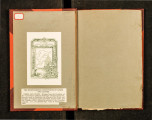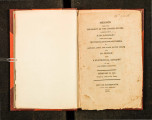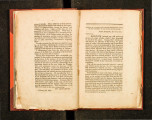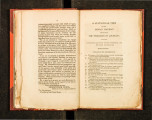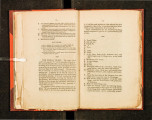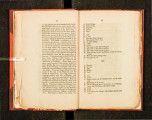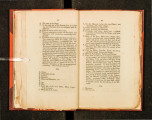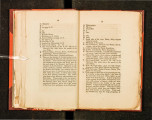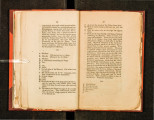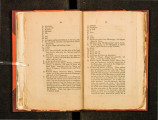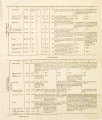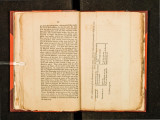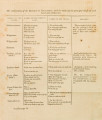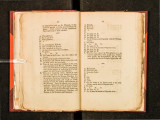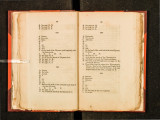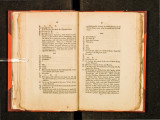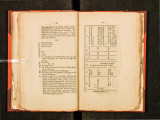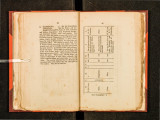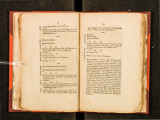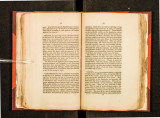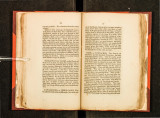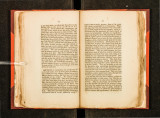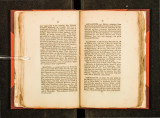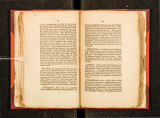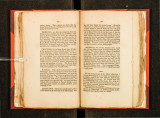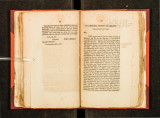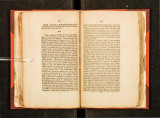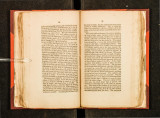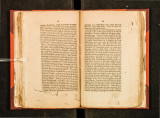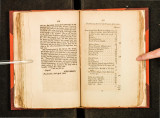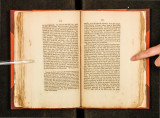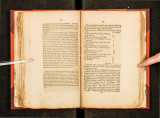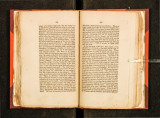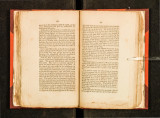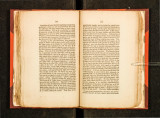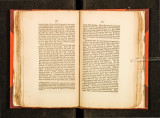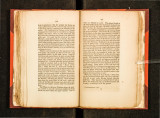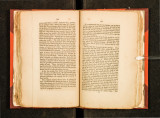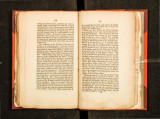| OCR Text |
Show 130 Quantities or water fowl are beginning to make the~r 1ce u7}1I.Cll are not very 11UlnerOUS here Until ~ppearat ' n the cold rains and frost cmnpel them to leave a ~ore northern climate. Fioh is not so abt!ndant ~s might be expected, owing, it is said, to t~1e mundat1on of the lVIissisc,ippi, in the year 1799, wh1ch damn1ed up the W ashita, some distance above the p~st, and produced a staguation and consequent. c~rr~tpt~on of the waters that destroyed all the fish \lnthm Its mfluence. At noon, on the 15th Novetnber, they passed the island of Mallet, and at ninety yards north-east fr?m the upper point of the island, by a good observatiOn ascertained their. latitude to be 32o 59' 27''.5 ~·.or two seconds and a half of latitude south of the dividing line between the territories of O:leans a;1d Loui iana. The bed of the river along this alluvial co.untry, is generally covered .with water, and the ~avigation uninterrupted; but 111 the afternoon of this day, they passed three contiguous sand bars, or b.eaches, called " les trois battures," and before evemng the "bay au de grand Marais," or great marsh cre~k on the right, and '' la Cypreri Chattelrau," a _r~mt of high land on the other side, 'i\•hich reaches withm half a mile of the river. As they advanced to~vards t~1e marais de saline, on the right, a stratu1n of d1rty W~Ite clay under the alluvial tract, shewed them to be leavmg the sunken and approaching the high land country. The salt li~k marsh does not derive its name from any brackishness in the water of the lake or m~rsh, but from its contiguity to some of the licks, sometimes called " saline,, and sometimes '' ~laise," ge:1erally found in a clay, compact enough for pot_ter~ war~. The bayau de la Tulipe forms a communica~IOn be. tween the lake and the river. Opposite to this plac • there is a point of high land, forn~ing a promont~!Yh advancing within a mile of the n yer, and to w tcr boats resort when the low grounds are under wate · A short league above is the mouth of ~he grand .bay;u de la Saline (Salt Lick creek). This creek lS 0 a 131 considerable length, and navigable for small boats. The hunters ascend it, to one hundred of their leag ues, in pursuit of game, and all agree that none of the spring-s which feed this creek are salt. It has obt?,ined its name fi·mn the rnanv buffaloc salt licks which have been discovered in its ~v icinity . Although mo t of these licks, by digging, furnish water which holds marine salt in solution, there exists no reason for believing that n1any ofthen1 would produce nitre. Notwithstanding this low and alluvial tract appears in ~Lll respects well adapted to the growth of the long moss (tilandsia ), none was observed since entering it in latitude 32° 52', and as the pilot informed them none would be seen in their progress up the river, it is probable that the latitude of thirty -three degrees is about the northern limit of vegetation. The long-leaf pine, frequently the grolvth of rich and even inundated land, was here observed in great abundance : the short-leaved or pitch pine, on the contrary, is always found upon arid lands and generally in sandy and lofty situations. This is the season when the poor settlers on the \Vashita turn out to make their annual hunt. The deer is now fat and the skins in perfection; the bear is now .also in his best state~ with regard .to the quality of his fur, and the quantity of fat or oil he yields, as he has been feasting luxuriantly on the autumnal fruits of the forest. It is here well known that he does not confine hi1nself, as smne writers have supposed, to vegetable food; he is particularly fond of hogs flesh; sheep and calves are frequ ently his prey, and no animal escapes him which comes 'vithin his power, and which he is able to conquer. He often destroys the fawn, when chance throws it in his way; he cannot, however, discover it by smelling, notwithstanding ~he excellence of his scent, for nature has, as if for ~ts protection, denied the fawn the property of leavmg a~y effluvium upon its track, a property so powerful m the old deer.*· The bear, unlike most other • It may not be generally known to naturalists, that between the hoof of -the deer, &c. there is fo\Uld a sack, with iti mouth |



